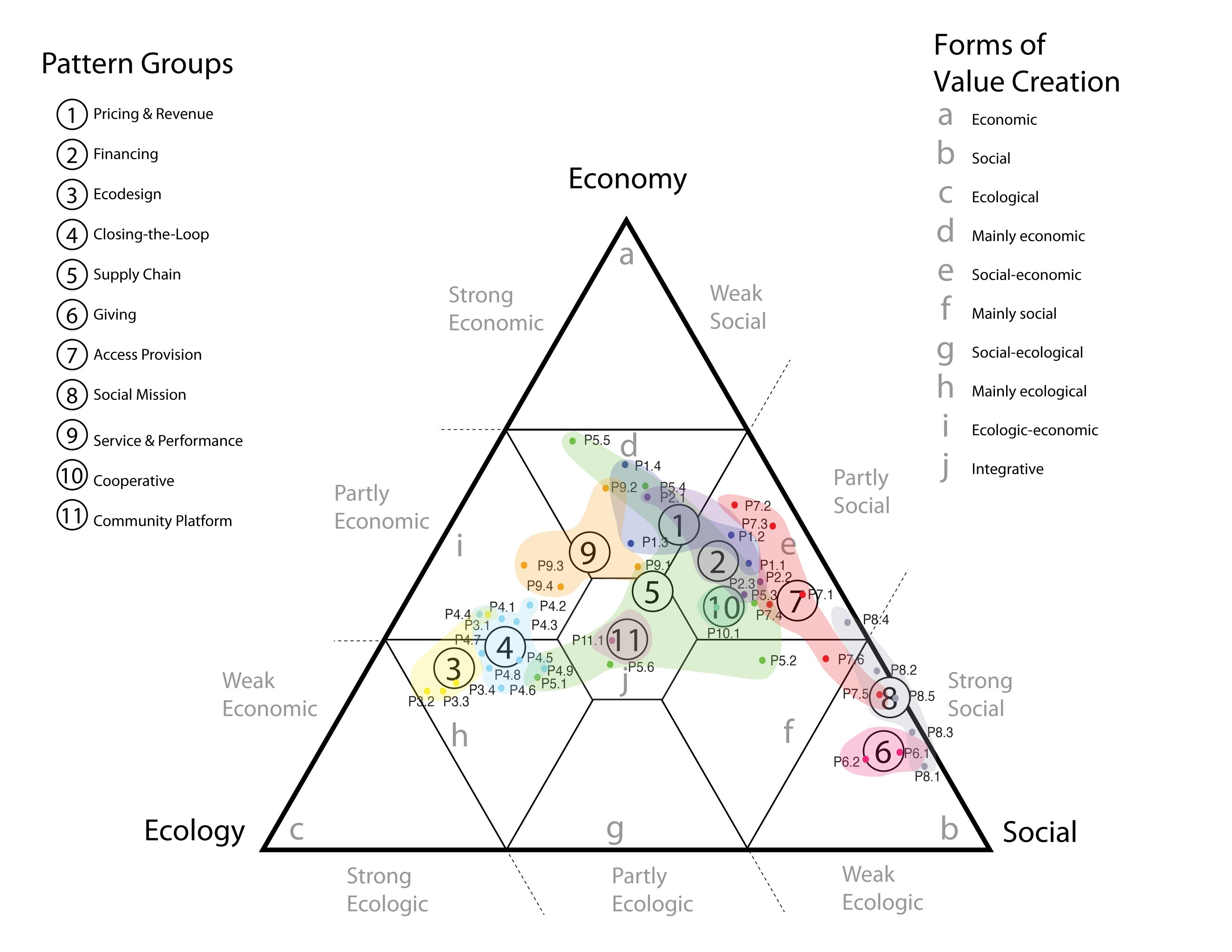Table of Contents
- Understanding the Website Flipping Model and Its Profit Potential
- Key Strategies for Valuing and Acquiring Websites
- Effective Techniques for Optimizing and Reselling for Maximum Profit
- Navigating the Risks: Common Pitfalls in Website Flipping
- Building a Sustainable Business Model Around Website Flipping
- Q&A
- To Wrap It Up
Understanding the Website Flipping Model and Its Profit Potential
The website flipping model is gaining traction among entrepreneurs looking to turn digital properties into profitable ventures. Essentially, it involves buying existing websites, enhancing their features, and selling them at a premium. The attractiveness of this model lies in its various paths to profit, including increased traffic, improved content, and better search engine rankings. The potential for profit varies based on several factors, such as the initial investment, market demand, and the skills employed during the flipping process.
To effectively capitalize on this business model, it’s vital to understand the key elements that contribute to a website’s value. Here are some critical aspects to consider:
- Traffic Sources: Analyzing where visitors originate can inform decisions on improvements and marketing strategies.
- Monetization Strategy: Websites with established revenue streams, such as affiliate marketing or ad placements, often appeal more to buyers.
- Content Quality: High-quality, engaging content can significantly enhance a website’s attractiveness and profitability.
When considering a website for flipping, a thorough evaluation of its financials is essential. Below is a simplified table illustrating various factors influencing a site’s valuation:
| Factor | Impact on Value |
|---|---|
| Monthly Revenue | Directly increases valuation; higher revenue indicates better potential. |
| Traffic Volume | More visitors usually equate to higher value, especially with consistent trends. |
| Content Updates | Regular updates can keep a site fresh, appealing to potential buyers. |
Utilizing these insights can help aspiring website flippers identify profitable opportunities and maximize their earnings. As the online world continues to evolve, the ability to recognize value in a digital asset and strategically enhance it lays the groundwork for a successful flipping endeavor.


Key Strategies for Valuing and Acquiring Websites
When it comes to maneuvering the intricacies of the website flipping market, having a solid grasp of valuation methods is essential for making informed decisions. One of the primary strategies involves analyzing the website’s traffic sources and conversion rates. Tools like Google Analytics can offer insights into where visitors are coming from and how effectively the site converts those visits into revenue. Moreover, evaluating the monetization methods employed—be it affiliate marketing, ad placements, or e-commerce—can help determine the true worth of a website. Knowing how to evaluate these factors can significantly impact your investment returns.
Another crucial aspect is conducting thorough due diligence before making a purchase. This includes examining the website’s domain history, as previous penalties or a poor reputation can adversely affect growth potential. Additionally, by looking at metrics such as domain authority, backlink profiles, and social media engagement, you can better assess the site’s standing in its niche. It’s often beneficial to create a checklist for website evaluation that includes:
- Content quality and structure
- SEO fundamentals
- Revenue streams
- Traffic analytics
Once you’ve valuably assessed a website, formulating a structured acquisition strategy is vital. Negotiating the purchase price requires a balance of market knowledge and negotiation skills. Creating a concise offer that highlights the strengths you discovered during evaluation can boost your negotiating power. Furthermore, considering partnerships with other investors may offer opportunities for shared risk and increased capital for acquiring higher-value sites. Here’s a brief table outlining potential acquisition strategies:
| Strategy | Description |
|---|---|
| Direct Purchase | Buying the site outright for a flat fee. |
| Partnerships | Collaborating with others to share the investment. |
| Negotiated Terms | Setting flexible payment plans or conditions. |


Effective Techniques for Optimizing and Reselling for Maximum Profit
To maximize profits in the website flipping business, it’s crucial to hone in on a few effective strategies. First and foremost, conduct thorough market research to identify profitable niches that are currently trending. This involves analyzing industry demands and assessing the competition to understand what types of websites are selling for the highest prices. Use tools like Google Trends, SEMrush, or Ahrefs to gather valuable insights that can guide your purchasing decisions.
Next, enhancing the website’s value before reselling is key. Consider implementing the following improvements:
- SEO Optimization: Focus on optimizing on-page elements such as title tags, meta descriptions, and image alt attributes to improve search engine rankings.
- Content Quality: Regularly update the website with high-quality, engaging content that draws visitors and boosts traffic levels.
- User Experience Enhancements: Ensure the website is mobile-friendly, has fast loading times, and features easy navigation to keep visitors engaged.
- Monetization Options: Integrate various revenue streams like affiliate marketing, ad placements, or eCommerce features to present a more attractive prospect to potential buyers.
when it comes time for the resale, crafting a compelling sales pitch is essential. Highlight the website’s potential for growth, its established performance metrics, and any improvements you’ve made. Providing relevant analytics and performance data helps build credibility. Consider employing the following table format to present vital stats clearly:
| Metric | Current Value | Potential Growth (%) |
|---|---|---|
| Monthly Visitors | 10,000 | 20% |
| Average Session Duration | 3 minutes | 15% |
| Annual Revenue | $5,000 | 30% |
With these techniques, you can significantly increase the appeal and value of your websites, ultimately leading to higher profit margins when selling.


Navigating the Risks: Common Pitfalls in Website Flipping
In the world of website flipping, understanding the landscape is crucial for success. One of the most significant pitfalls involves undervaluing the website’s existing assets. New flippers often focus solely on traffic numbers or ad revenue without recognizing the value of established backlinks, credible domain authority, and user engagement metrics. These elements are often overlooked but can dramatically increase the site’s resale value. It’s essential to analyze every aspect of a website to avoid making uninformed offers that could lead to a poor investment.
Another common mistake is neglecting due diligence at the acquisition stage. Many flippers jump at seemingly lucrative deals without thoroughly examining the site’s history and performance data. This haste can result in purchasing a site plagued with issues such as penalties, outdated content, or technical deficiencies. A comprehensive audit that includes aspects like SEO health, load times, and user behavior can reveal red flags that could jeopardize your investment.
Furthermore, not having a clear exit strategy can lead to confusion and lost opportunities. Many new flippers buy websites with the intention of improving and flipping them quickly but fail to plan for market fluctuations and changes in popular trends. Without a well-defined roadmap detailing expected outcomes and timelines, it becomes challenging to categorize success or recognize when it’s time to sell. Keeping abreast of market trends is a savvy tactic that fosters smarter decision-making in the buying and selling process.


Building a Sustainable Business Model Around Website Flipping
Creating a sustainable business model in the realm of website flipping requires a keen understanding of market dynamics and digital investments. This not only involves buying and selling websites, but also building a robust strategy to enhance their value over time. Critical to this process is the ability to identify potential websites with growth capabilities and determining how to improve their performance through SEO optimization, content enhancement, and user experience improvements.
When considering how to boost the value of a website, focus on the following aspects:
- Traffic Generation: Implement effective SEO practices to organically grow website traffic.
- Content Quality: Produce high-quality, engaging content that resonates with the target audience.
- Monetization Strategies: Explore various revenue streams such as affiliate marketing, ads, or selling products directly through the site.
- Branding: Establish a strong brand identity that increases the site’s credibility.
A solid approach to maintaining profitability in website flipping should also include regular audits of your portfolio. Consider using a simple table to track key metrics that can guide your decision-making:
| Website | Purchase Price | Current Value | Monthly Revenue | Traffic (Monthly Visitors) |
|---|---|---|---|---|
| example1.com | $1,000 | $3,000 | $150 | 5,000 |
| example2.com | $500 | $1,500 | $50 | 1,500 |
| example3.com | $750 | $2,000 | $80 | 2,700 |
Staying adaptable and informed about industry trends can significantly enhance your flipping strategy. By regularly reassessing your investments and being proactive in making improvements, you can not only maximize profits but also create a brand with lasting value in the competitive digital landscape.
Q&A
Q&A: Understanding the Website Flipping Business
Q1: What is website flipping?
A1: Website flipping is the process of buying a website, improving it, and then selling it for a profit. Much like flipping a house, the goal is to enhance the site’s value through various strategies such as optimizing content, increasing traffic, or enhancing design.Q2: How do I determine the value of a website?
A2: Valuing a website often depends on several key factors: the site’s current traffic and revenue, its growth potential, age, and the quality of its content. A common method is to use a multiple of its monthly earnings, typically ranging from 24 to 36 times the average monthly profit.Q3: What are the best platforms to buy and sell websites?
A3: There are several reputable platforms for buying and selling websites, including Flippa, Empire Flippers, and Website Broker. Each platform has its nuances, so it’s essential to do your research and choose one that fits your needs.Q4: Is it possible to flip websites without technical skills?
A4: Yes, it’s entirely possible! While technical skills can give you an advantage in making improvements, you can also collaborate with freelancers or use user-friendly website builders. Understanding basic SEO and digital marketing can be a huge bonus, but it’s not an absolute prerequisite.Q5: What improvements can increase a website’s value?
A5: Several enhancements can increase a website’s value, including improving site speed, enhancing SEO practices, revamping the design, boosting social media presence, and increasing user engagement. Additionally, creating high-quality content and building backlinks can significantly raise the site’s authority and appeal.Q6: How can I finance my website flipping business?
A6: If you’re starting small, you can use personal savings or reinvest profits from your initial flips. For larger investments, you can look into crowdfunding, angel investors, or even loans specifically geared towards digital businesses. Just ensure the projected ROI justifies the risk.Q7: What are common mistakes to avoid in website flipping?
A7: Some common pitfalls include rushing into purchases without proper due diligence, overestimating a site’s potential, neglecting ongoing maintenance or content updates, and underestimating the time it takes to see a return on investment. Always conduct thorough research before committing to a purchase.Q8: Is website flipping a sustainable business model?
A8: Yes, as long as you stay adaptable to market trends and evolving digital landscapes. The demand for online real estate continues to grow, and those who stay informed about SEO, website management, and market needs can find lasting success in this field.Q9: How much time does it typically take to flip a website?
A9: The duration can vary widely based on the website’s condition, the improvements needed, and your approach. Some sites might be flipped in a few weeks, while others may require several months of updates and optimization before achieving a profitable sale.Q10: How can I effectively market a flipped website for sale?
A10: Effective marketing strategies include using the same platforms where you purchased the site, leveraging social media, and creating listings that highlight the site’s strengths and growth potential. Consider directly reaching out to potential buyers who may be interested in your niche. Clear, professional presentation is key!This Q&A aims to provide insights into the world of website flipping, addressing key aspects for those interested in embarking on this venture. Whether you’re a novice or seasoned businessperson, understanding these facets will help you navigate the landscape more effectively.

